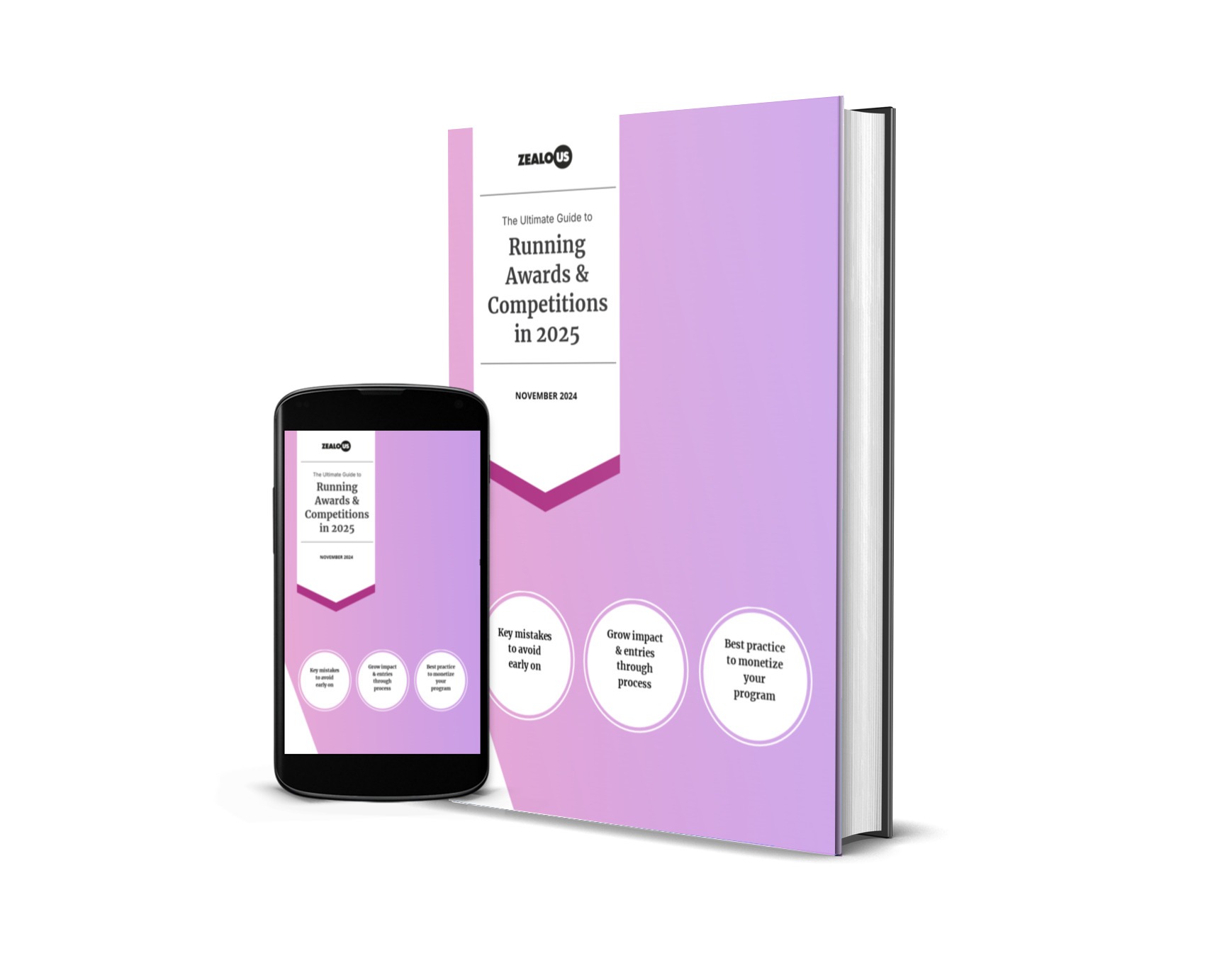How long should I open submissions for?
Having submissions open for too long leads to inaction on the behalf of the candidate (no pressure to submit now). This may put a dent in your marketing budget and have very little outcome. Yet, taking submissions over too short a period could be detrimental to the turnout (candidates may feel they don’t have time to apply).
If you’re not asking candidates to create something for you specifically; we’ve found opening submissions for 6 to 8 weeks to be the perfect length.
If you are asking applicants to create something new for you, then the length that you open submissions for should reflect the effort you expect from them. Give them the time needed to work on your brief. Unless submissions are for a competition or an educational context, it’s worth noting that asking for bespoke work from candidates without some form of payment (spec work), will lead to fewer submissions of varying quality. Consider alternative ways of making a call out.
Tips
- Opening submissions for too long won’t help you get more submissions
- On average opening submissions for 6 to 8 weeks is ideal
- If candidates are creating something for you, you may need longer
Extend your deadline
The bulk of your submissions will always come close to your deadline (often within 48 hours). A good way of ensuring candidates feel the need to submit earlier is by giving them an earlier deadline, and then extending it.
Extensions should only happen once and shouldn’t be for too long, otherwise, the candidate will feel like you are struggling to get submissions. A week is often enough.
If you’re taking fees, you can create that same feeling of urgency by ensuring you have discounted early bird fees. If you’re not taking a fee, but still want to create this feeling of urgency, you could allow applicants to submit for free up to a certain date, and then charge them a nominal fee for being late.
Make sure you build that into your schedule!
Tips
- Most of your submissions will come in the last 48 hours
- Creating an early deadline which you can later extend will create urgency around submitting
- Don’t extend submissions more than once, and no more than a week
Check for holidays
It will be almost impossible for you to have a long call out without hitting a holiday. But it’s important for your key dates to fall on a clear calendar. Closing submissions in mid-August is dangerous since people will be away. You can find a list of UK bank holidays and school holidays here.
Be mindful that your target audience will have their own needs – for example targeting graduates just before their final show will lead to them being too busy to engage. Try and put yourself in their shoes, or even speak to a few students to find out when the best dates would be and model that into your timelines.
Tips
- Make sure those submitting are not away on holiday when your submissions close
- Be mindful of key dates in your target audiences diary
If you take a fee, watch out for pay day
Although most of us in the sector are freelancers, many will have a job on the side. We all feel a little squeezed for cash just before pay-day. If you’re taking submission fees; make sure you close your submissions just after pay-day when candidates can afford to submit.
Tips
- If you’re taking a fee, make sure you close submissions after payday, not just before
Managing large numbers of submissions
If you’re expecting hundreds of submissions, we would strongly recommend you shortlist them prior to passing them on to core decision makers or judges.
High-level judges will be very busy people, so giving them a smaller amount of applications to go through will give them time to give applicants the attention they deserve without swamping them.
This also allows you to make a better approach to high-level individuals to get involved by defining the amount of time you will need from them early on. e.g. “It will only take an hour of your time to go through 25 applicants”.
If you’re expecting over 600 submissions, we would suggest having multiple rounds of selection. Getting your colleagues to help in the first round will allow you to go through the submissions quicker, whilst being fair to all applicants.
Tips
- Shortlist candidates to manage workloads for your judges
- With large amounts of submissions, consider inviting your team to help you
How long to shortlist for
The time it takes to shortlist submissions will be down to the number and type of submissions you get.
Try to simulate the time it will take for you to go through the shortlist by taking the best-case scenario (the largest number of submissions you could potentially get) and multiply it by how long it would take for you to score one entry. If you have a larger team, you can divide it by the number of people looking at the shortlist.
Time taken = (Amount of submissions x Time per submission) / Team members
It’s important to then establish how much time that takes within your workday; try not to shortlist over weekends (unless that’s what you really want to do) and remember an 8-hour work day is 480 minutes.
No. of workdays = Time taken / 480
e.g. If you were to get 1,000 submissions and spend a minute on each – that would be two full days of shortlisting, with an additional 40 minutes on the 3rd day required to fully complete viewing the submissions.
Tips
- The type of content will define how long you need to shortlist candidates
- Calculate how many workdays it will take you to shortlist, based on the content and numbers expected
- Remember a workday is 480 minutes
Making your selection
If you have multiple rounds for which you have judges, make sure you give yourself time in between them to allow you to confirm those selected to go from one round to the next!
Tips
- It’s easy to remember dates for your judges, but make sure to give yourself time between judges scoring to allow you to make your selection, and prep work between stages
How long to give judges
Just like your applicants, giving judges too long to give their verdicts will lead to inaction. Not giving them enough time may push them to drop out or be incapable of judging due to external circumstances.
If there are no holidays during the judging period, we’ve found giving judges 2 to 3 weekends to go through a small shortlist – anything from 25 to 100 submissions (depending on the type of content) tends to work well.
Tips
- on average 2-3 weeks is a good amount of time for very busy judges
- for judges that help in their spare time, be sure to include a couple of weekends
Build in safety
The best-laid plans of mice and men often go awry. Make sure you give yourself buffer time. If you compile reports, export data and communicate with all stakeholders personally, make sure you have enough time for those actions to take place between each one of the steps. Also consider if you are dealing with hundreds of submissions, that could lead to days of work.
If your process is fully streamlined (we can help with that!) putting these buffers are less necessary. For awards programs, using a comprehensive awards management platform can automate many of these time-consuming tasks, reducing the need for extensive buffer periods.
Tips
- The more complex your call, the more contingency you should build in
- Build buffers in between rounds, so if one slips it doesn’t impact the others
Never forget ramp up time
Don’t forget to schedule a good amount of time before submissions open to plan your marketing. You can also research potential candidates to contact directly (of course within what GDPR allows) and contact them when submissions open.
This will allow you to hit the ground running as soon as your submissions open.
Tips
- Building time for planning marketing before your call opens will allow for quicker submissions
- Start letting people know before your submissions open, and let them follow you for more information
Conclusion
Investing the time early on to establish your perfect timeline, will save you time later. Build safety directly into your schedule and try and stick to your timelines. Moving dates may lead to judges being unavailable to score, wasted marketing spend, candidates no longer being able to take part, and most importantly, a huge amount of time spent on your behalf re-organising all your stakeholders.
There isn’t a perfect schedule for everyone, but following the above should help you question your process and come up with the best possible alternative.
Finally, don’t hesitate to get in touch should you need a hand with your submissions.
Want us to write more content like this? Give it a like
Share

Guy Armitage is the founder of Zealous and author of “Everyone is Creative“. He is on a mission to amplify the world’s creative potential.









